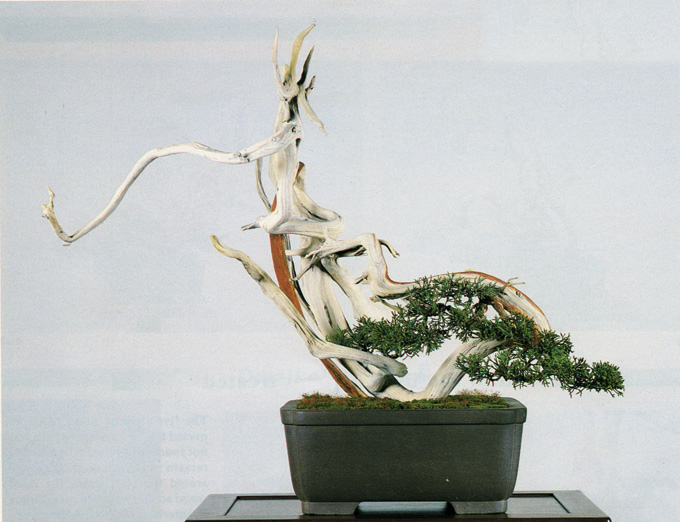 You’ll never guess what happened to this tree (unless you’ve seen our Masters’ Series Juniper book or Bonsai Today issue 21). Here’s a hint: it was flipped upside down somewhere along the way from where it started (below) to where it ended (above). The artist is Masahiko Kimura, aka The Magician.
You’ll never guess what happened to this tree (unless you’ve seen our Masters’ Series Juniper book or Bonsai Today issue 21). Here’s a hint: it was flipped upside down somewhere along the way from where it started (below) to where it ended (above). The artist is Masahiko Kimura, aka The Magician.
Bonsai Today back issues and our Masters’ Series books present literally hundreds of bonsai techniques. Some are quite simple and suitable for any beginner. Many others are fairly advanced, though doable if you pay close attention and take your time. And then there are the few techniques that no one should try without parental supervision.
This particular Shimpaku lives in that rarefied realm of mind bending (and trunk bending) bonsai transformations. If I had to take a wild guess, I’d say some of you will like this transformation, some of you won’t be quite so sure, and some of you will take issue with the radical, technique driven, sculptural type bonsai that this represents.
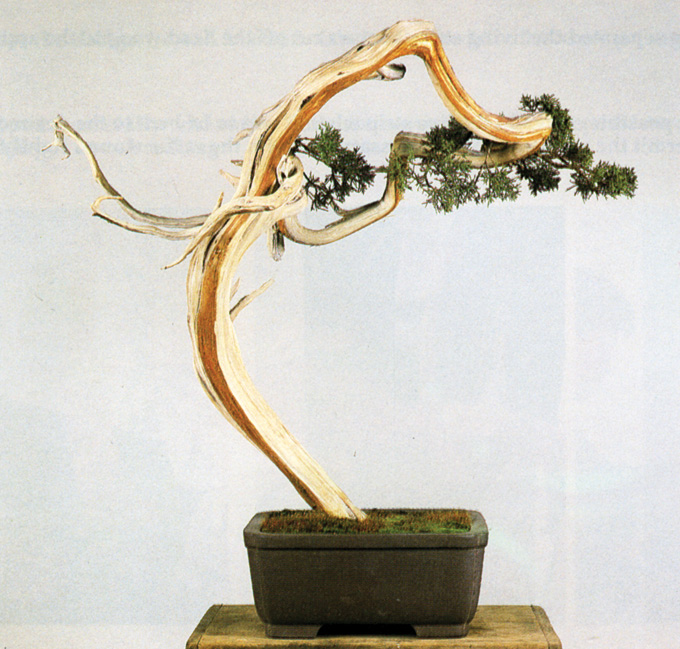 Here’s the old front before it was flipped. Clearly Mr Kimura doesn’t always see what what most of us see when he looks at a tree.
Here’s the old front before it was flipped. Clearly Mr Kimura doesn’t always see what what most of us see when he looks at a tree.
How Kimura got from the photo at the top to the photo immediately above, might remain a bit of mystery, unless you have our Juniper book or Bonsai Today issue 21. We ‘ll show you a handful of photos here just to whet your appetite (the original article has 52 photos).
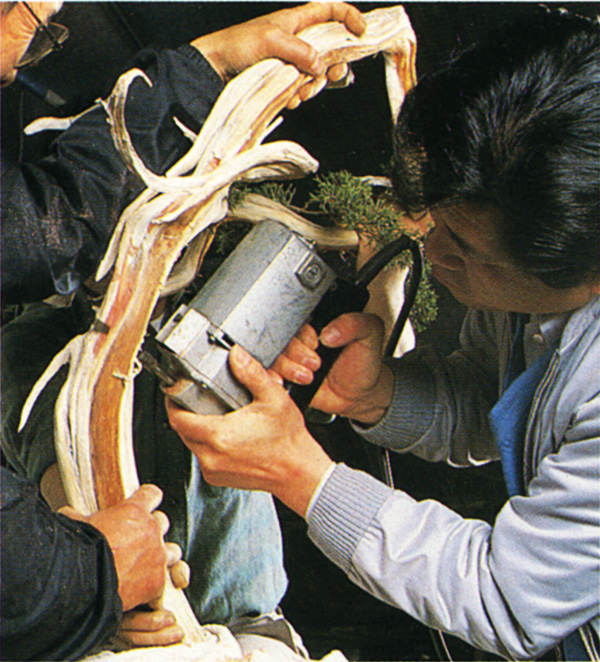 Separating the living vein from the rest of the trunk.
Separating the living vein from the rest of the trunk.
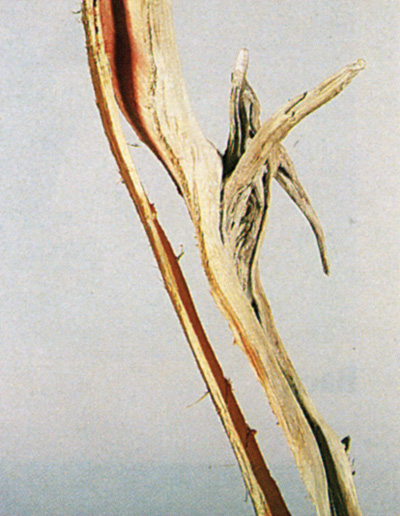 The separated strip of live wood has been cleaned up with a tiny power grinder.
The separated strip of live wood has been cleaned up with a tiny power grinder.
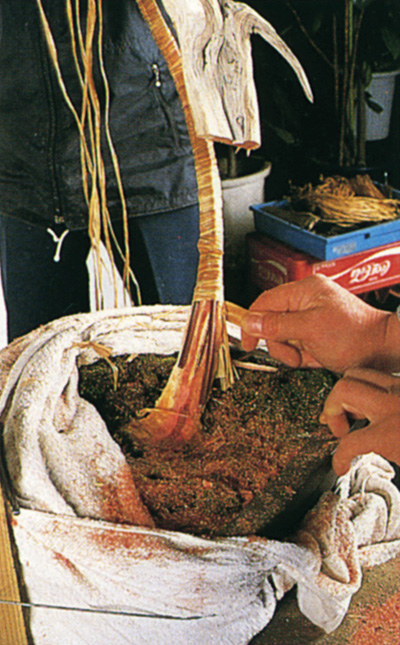 The separated living vein is supported by long strips of wire and then wrapped with rafia.
The separated living vein is supported by long strips of wire and then wrapped with rafia.
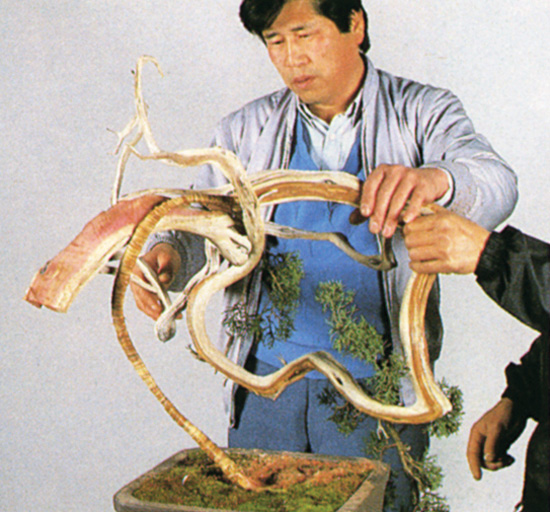 Bending. It has to come all the way down.
Bending. It has to come all the way down.
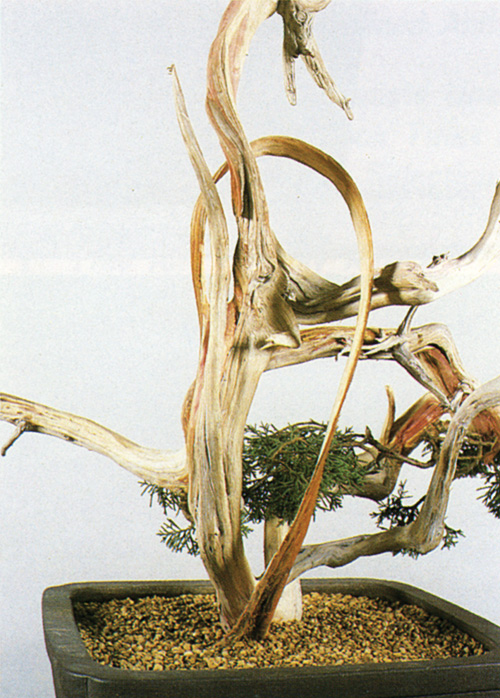 A side view after the bending is complete and the raffia has been removed.
A side view after the bending is complete and the raffia has been removed.
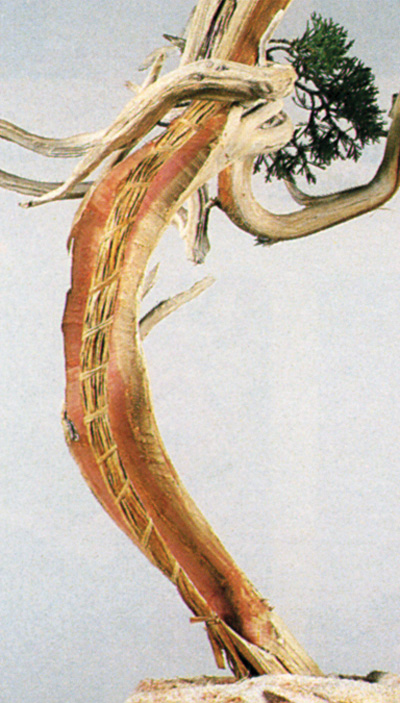
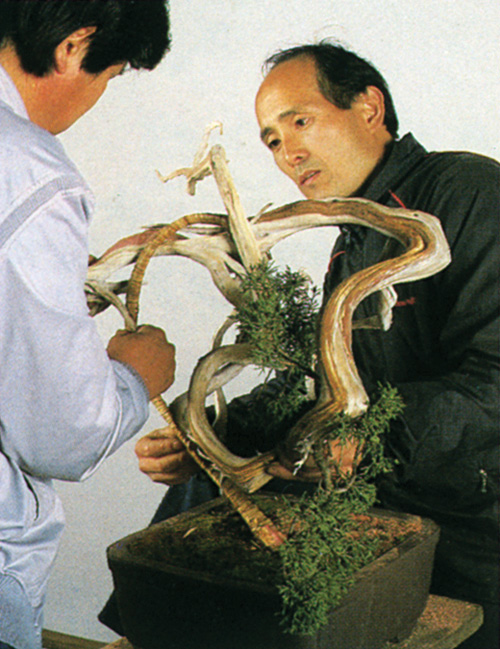
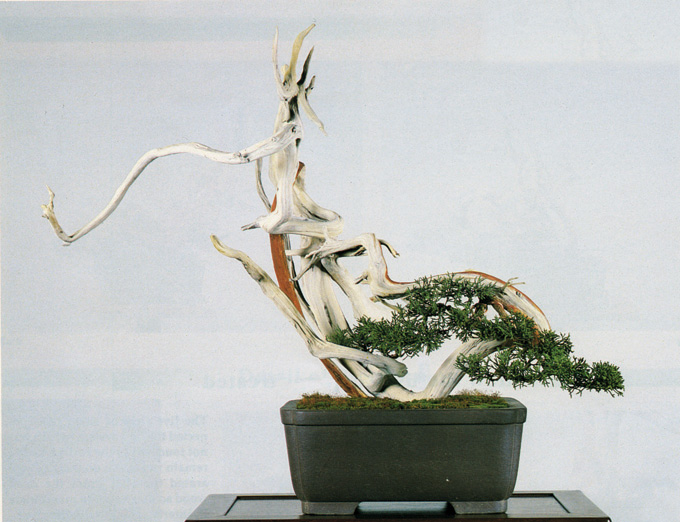
I guess the why is because he could. I know–my lack of sophistication is showing.
HE really is THE MAGICIAN.
Definitely magical but I prefer the original to the finished version. I would have put it in a round Nanban-style pot and messed with the angle a bit. I probably would have knocked off the long jins coming out the left side of the composition and gone for a much more simple, lyrical bunjin. I love Kimura-san’s work but this tree has always bugged me as a case of “If it’s not broken, don’t fix it.”
I agree with Al. Kimura-san definitely thinks way outside the box but this tree was beautiful to start with, now it looks good but it’s not stunning anymore.
Hello Al and Ann (two old internet friends),
I suspect he did it for a Kinbon article as a challenge and a way to show his technical virtuosity and open up possibilities for others to stretch their imaginations and their bonsai. Whether he would done this just on his own with one of his own trees, is open to question.
@Wayne,
That does make some sense. Kimura worked on a bunjin for an article, and was given the challenge of doing it with one branch only. The article stated that K’s preference was two branches but he accepted the challenge.
Not really sure this is all that much better to be honest. I think the wood is more interesting in the first picture, and something equally creative could have been done with the foliage to make it more interesting. Seems like a lot of work for not much gain.
Wayne,
I also agree that the original tree is better; reminiscent of antique Chinese painting.
On another note, the gentleman assisting Kimura is Mr. Takeo Kawabe, who recently published a book (Bonsai Craftsman (His Soul and Footsteps) on Juniper, Pine and Yew.
Regards,
Jose Luis
Thanks as always Jose Luis…